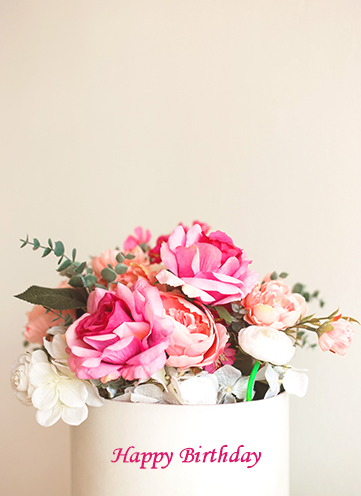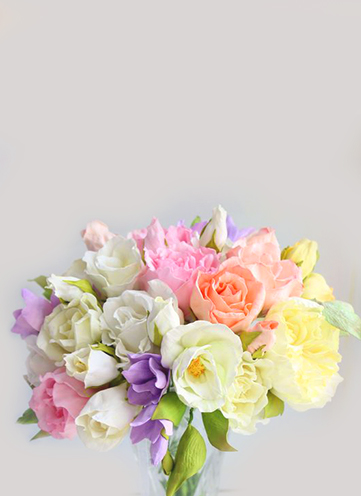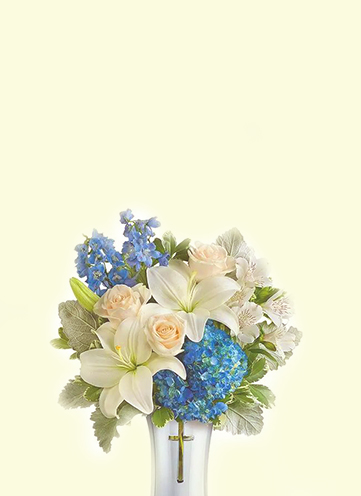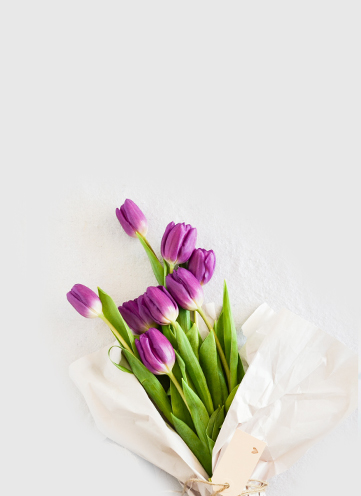Journey Through 7 Hidden Tulip Facts That Few People Know
Posted on 18/06/2025

Journey Through 7 Hidden Tulip Facts That Few People Know
Tulips are celebrated worldwide for their striking beauty and have become iconic symbols of love, spring, and new beginnings. Yet, beyond their vibrant blooms and popularity every springtime, there is a fascinating world of secrets surrounding these flowers. In this comprehensive guide, you will embark on a journey through seven hidden tulip facts that few people know. Whether you're a gardening enthusiast, history buff, or simply a lover of gorgeous gardens, these *unique tulip insights* will change how you view this legendary bloom.
Table of Contents
- The Wild Origins of Tulips: Far from the Netherlands
- The Birth of Tulip Mania: History's First Economic Bubble
- Tulips in Art and Culture
- Tulip Colors and Their Hidden Meanings
- The Survival of Tulips: Tougher Than You Think
- The Role of Tulips in Modern Science
- Unusual Uses: Culinary and Beyond
The Wild Origins of Tulips: Far from the Netherlands
When you think of tulips, sprawling Dutch fields burst into mind. But did you know these flowers did not originally come from the Netherlands? In reality, the origin of tulips traces back to the rocky landscapes of Central Asia. Wild tulip species have grown for thousands of years in the mountainous regions of modern-day Kazakhstan, Iran, and Afghanistan.
- Ancient travelers and Persian poets have celebrated wild tulips for centuries, long before the Dutch embraced them.
- The word "tulip" comes from the Persian word "delband," meaning turban, apparently inspired by the flower's shape.
- Ottoman sultans considered tulips a symbol of wealth, power, and paradise, cultivating hundreds of varieties in their royal gardens by the 16th century.
Only in the late 1500s did tulip bulbs arrive in Europe, after famed botanist Carolus Clusius introduced them to the continent while working with the Leiden Botanical Garden in Holland. From then on, the rest is tulip history!
The Birth of Tulip Mania: History's First Economic Bubble
One of the most intriguing hidden tulip facts is how these blooms once sparked the world's first speculative economic bubble. In the early 17th century, as Dutch fascination with rare tulips soared, traders began buying and selling bulbs at astronomical prices. This period, known as Tulip Mania, peaked in the 1630s.
- Some individual tulip bulbs sold for more than the price of a house in Amsterdam.
- Tulip contracts exchanged hands multiple times in a single day - often by people who never even saw the flowers themselves!
- Eventually, the bubble burst, leading to a financial crash that affected many investors and merchants.
The tulip value crash of 1637 provides economists with one of the earliest lessons in market speculation and collective psychology. Even today, the phrase "tulip mania" is used to describe natural or market hysteria over commodities or assets. Despite this dramatic episode, tulips only grew in prestige and popularity in gardens everywhere.
Tulips in Art and Culture
The mesmerizing beauty of tulips has deeply influenced art, literature, and ceremony across centuries. Beyond their economic value, tulips play a symbolic role in various cultures.
- Ottoman Empire: During the "Tulip Era" (1718-1730), the flowers became a motif for abundance and sophistication. They adorned textiles, tiles, and royal saloons.
- European Masters: Dutch Golden Age painters, such as Jan Davidsz de Heem, often included tulips in their vibrant still-life paintings, symbolizing wealth and the fleeting nature of beauty.
- Modern impressions: Today, the Keukenhof Garden in Lisse, Netherlands, showcases over 7 million tulip bulbs each spring, attracting tourists and artists from all corners of the world.
From Persian poetry to contemporary garden design, tulips continue to inspire creativity and symbolize hope, renewal, and love.
Tulip Colors and Their Hidden Meanings
Most people know tulips come in a spectacular array of colors, but few realize that each shade has its own special meaning and cultural significance. In the language of flowers (floriography), tulip colors convey subtle messages:
- Red Tulips: Stand for deep love and passion. A bouquet of red tulips is often seen as a declaration of romance.
- Yellow Tulips: Once associated with hopeless love but now symbolize cheerfulness, friendship, and sunshine.
- Purple Tulips: Represent royalty and admiration. They evoke elegance and sophistication.
- White Tulips: Signify forgiveness, purity, and peaceful new beginnings.
- Black Tulips: Actually deep, velvety purple, black tulips stand for mystery and power. They've sparked global quests, influencing stories by Alexandre Dumas and royal gardening competitions.
- Multi-colored and Parrot Tulips: These unique varieties, with feathered or flame-like petal patterns, are associated with creative expression and individuality.
So next time you give or receive tulips, remember: each color tells its own secret story.
The Survival of Tulips: Tougher Than You Think
Don't let their delicate appearance fool you! One of the most surprising tulip facts is their incredible resilience. Tulips evolved in harsh, mountainous landscapes where they endure icy winters and scorching summers.
- Tulip bulbs store energy: They survive cold winters by staying dormant underground, only emerging when the temperature is just right for growth.
- Wild tulip varieties can thrive in rocky soils, high altitudes, and with minimal water, making them remarkably drought-resistant compared to many garden cultivars.
- Some species can bloom even after decades of neglect, testament to their hardiness and ability to adapt.
This resilience helps explain why tulips continue to flourish from Central Asian steppes to urban gardens in North America and Europe. Next time you admire a blooming tulip, think about the journey it's survived just to brighten your spring.
The Role of Tulips in Modern Science
Tulips may be ancient flowers, but they play a cutting-edge role in today's botanical science and genetics research. Understanding how tulip varieties evolved has contributed to advances in biodiversity, horticulture, and even medicine.
- Color genetics: The myriad tulip colors result from a complex interplay of pigments (anthocyanins and carotenoids). Geneticists study these traits to enhance color variety in ornamental plants.
- Hybridization: Tulips are known for their ability to cross-breed. Breeders have created over 3,000 registered varieties, each with unique combinations of size, shape, and color.
- Virus patterns: The famous "broken tulip" pattern--distinctive streaks of color--is caused by the tulip breaking virus. Though the virus can weaken plants, it also led to the creation of many beloved tulip types. Today, controlled hybridization achieves similar effects while keeping plants healthy.
- Biomimicry: Researchers study tulip petals for clues in engineering and design. For instance, the way tulip petals open and close in response to sunlight is inspiring new materials and solar panel technology.
Thus, the humble tulip not only graces gardens but also continues to shape scientific discovery and innovation.
Unusual Uses: Culinary and Beyond
Most people see tulips as solely ornamental, but throughout history, these flowers have played surprising roles in survival and culture.
- Edible flowers: During WWII, when the Netherlands faced famine, tulip bulbs became a vital food source. People baked or boiled bulbs to stave off hunger. While this isn't recommended for regular consumption due to potential toxins, tulip petals (in moderation) are sometimes used as colorful garnishes or in salads.
- Naturally dyeing textiles: The vibrant pigments in tulip petals have been used in traditional crafts to color fabrics and handmade papers.
- Traditional medicine: In folk remedies, tulip extracts have purportedly been used to treat coughs and infections, although there's limited scientific evidence for their efficacy.
- Symbolic uses: Tulips are commonly featured in engagements, weddings, and religious ceremonies, reinforcing their importance in art and daily life.
*If you're adventurous in the kitchen, explore edible uses of tulip petals--but always identify your variety and confirm it's safe to eat*! Many modern cultivars are not intended for culinary purposes.

Conclusion: The Enduring Allure of Tulips
As we've journeyed through seven hidden tulip facts few people know, it's clear that these flowers embody much more than meets the eye. From their rugged Central Asian roots to their starring roles in global economics, art, and science, tulips are steeped in unseen stories and surprising secrets.
Whether you're marveling at a field in full bloom, painting a still-life, or tending bulbs in your backyard, take a moment to remember the mysteries beneath the petals. These facts not only enhance our appreciation for tulips but also deepen our connection to horticultural heritage and natural wonder.
What hidden tulip stories surprise you most? Share your favorites, and let your own tulip journey bloom every spring!
Latest Posts
Long-Lasting Floral Wonders: Top 12 Must-Have Flowers
Hydrangea Happiness: Your Care Companion
Unlock Your Orchid's Potential with Our Comprehensive Care Instructions
Vibrant Messages: Understanding Peony Flower Color Symbolism





